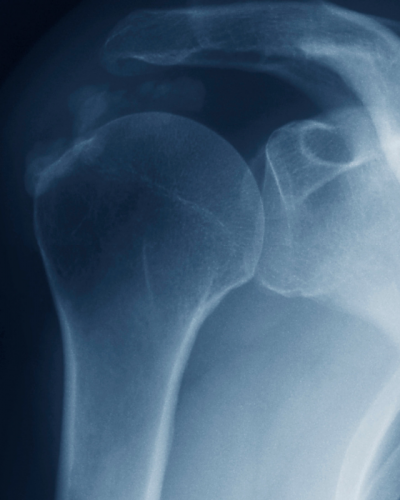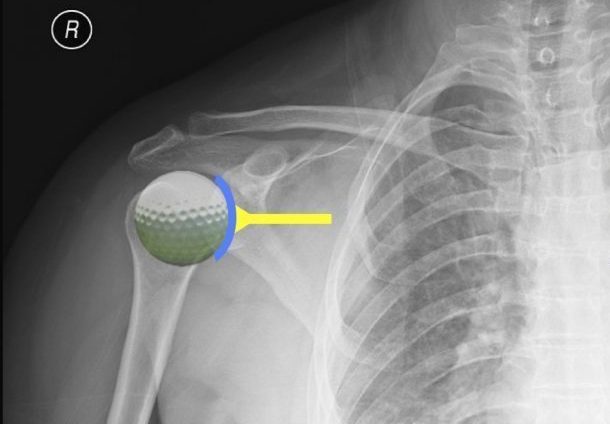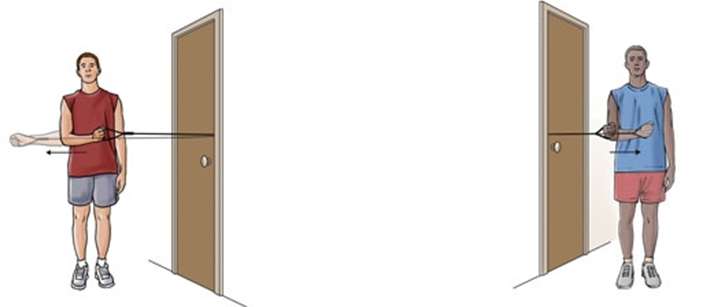Rotator cuff tear treatment is very common due to the frequency of this type of injury. A rotator cuff tear is a tear to one of the 4 rotator cuff muscles at the shoulder.
Rotator cuff tears can either be the result of a traumatic incident or repetitive movements. Determining whether you need rotator cuff tear physiotherapy or other forms of treatment is mostly dictated by your age and individual response to treatment.
WHAT IS THE ROTATOR CUFF?
The rotator cuff refers to a group of 4 muscles which work to stabilise the shoulder:
- Supraspinatus
- Infraspinatus
- Subscapularis
- Teres minor
The rotator cuff muscles cross the shoulder joint to act as a compressive cuff to maintain the stability of the shoulder joint when it is moving. The shoulder joint has the greatest amount of movement of any joint in the body and is therefore also the most unstable, hence the frequency of rotator cuff tear injuries. Like any joint, the shoulder has ligaments to provide stability, but it relies heavily on the rotator cuff for dynamic stability.


WHY IS THE SHOULDER SO UNSTABLE?
Think of the shoulder joint like a golf ball sitting on a tee. The golf ball is much larger than the tee. To help with the stability of the joint there is the labrum (blue). It makes the surface of the tee a little larger.
The main stability though, comes from the muscles. They act like ropes to hold the ball on the tee as the ball rolls around. The rotator cuff muscles blend together almost forming a blanket which covers the entire ball of the joint.
HOW DOES A ROTATOR CUFF TEAR HAPPEN?
Rotator cuff tears can happen in one of two ways:
- Repetitive microtrauma – the rotator cuff tear occur from constant use and repetitive actions, giving the muscles little time to recover. The rotator cuff muscles are small and breakdown with overuse. This often happens in the older population or in athletes who participate in throwing and/or overhead sports.
- Trauma – the rotator cuff tear occurs when a large force impacts the shoulder. The force is greater than what can be withstood by the rotator cuff muscles, so a tear occurs. This are commonly seen from a fall, lifting a heavy load or in contact sports.
Normal degenerative changes are another contributing factor to the frequent need for rotator cuff tear treatment. As we get older the prevalence of rotator cuff tears increases. The evidence tells us that more than 50% of people aged 60 years or older have rotator cuff tears. But, not everyone with a rotator cuff tear has pain. Pain can begin gradually or quite quickly. This tells us that rotator cuff tears are a normal part of aging and whether you have pain or not depends on what you do with your shoulder.
WHAT ARE THE SYMPTOMS OF A ROTATOR CUFF TEAR?
- Deep ache in the shoulder which is made worse by shoulder movement
- Shoulder weakness when lifting your hand above your head
- Pain travelling down into the arm
- Inability to sleep on the affected side due to pain

WHAT ROTATOR CUFF TEAR TREATMENT OPTIONS ARE AVAILABLE?
For almost all rotator cuff tears the initial course of treatment is conservative management. A trial of 6 weeks – 3 months of physiotherapy is encouraged before considering alternative options.
Treatment of rotator cuff tears involves a collaborative treatment approach where you and your physiotherapist Brisbane team member from Pivotal Motion Physiotherapy will work closely together through the rehabilitation process to get the best outcomes. The goals of rotator cuff tear physiotherapy treatment are to reduce pain and improve function.
Early treatment approaches will focus on pain management strategies and may involve ice, massage, dry needling and taping. As pain becomes less of an issue, the focus will switch to function. Whilst a lot of rotator cuff tears do not heal it is possible to achieve good function with physiotherapy. A physiotherapist will provide a targeted exercise program along with more intensive hands on therapy to correct movement patterns around the shoulder.
Strengthening exercises will also focus on muscles attaching to the shoulder blade. Shoulder blade position is important as it affects the ability of the rotator cuff muscles to produce force. A strong shoulder blade position is also extremely important for overhead tasks. Without a strong, stable base the rotator cuff muscles must work even harder.
WHAT EXERCISES WILL I COMPLETE AS PART OF MY ROTATOR CUFF TEAR TREATMENT?
In the early stages following a rotator cuff tear your physiotherapist may prescribe isometric exercises. Isometric exercises are exercises without movement. You engage the muscle by pushing against an equal resistance. For the rotator cuff muscles, the resistance can be a wall or even your own hand.
Isometric exercises are excellent in the early phase as they prevent your muscles turning off due to pain. Contracting the muscle fibres also improves the healing off the muscles. Isometric exercises will often be short of pain and involve repetitions of holding the contraction. Another important goal in the acute stage is to maintain range of motion. This is done by passively (no effort) moving the arm using something like a broomstick.
Once the pain has resolved, the goal is to begin strengthening the rotator cuff muscles. Strength exercises commonly involve moving the shoulder against resistance to target specific muscles. These are the exercises you would have seen with a theraband. A shoulder injury physio expert here at Pivotal Motion Physiotherapy can tell you the appropriate resistance to use for your own injury. In this stage your physiotherapist may also incorporate exercise to strengthen the shoulder blade muscles.
The finally stage of rehabilitation involves functional strengthening. This will involve exercises engaging both the scapula and rotator cuff muscles. An individualised exercise program will take into account your ability and goals. You may be given gym program to challenge the right muscles.


Our physiotherapist Brisbane team can guide you through the rehabilitation process. Contact us today to book a consultation today or call the clinic today on 07 3352 5116.
FREQUENTLY ASKED QUESTIONS
Do I need rotator cuff tear treatment, or will my injury heal on its own?
A definitive answer to this question requires a thorough examination. Generally, tears can be improved by strengthening the muscles around the shoulder but will require surgery to heal completely.
What are signs of a rotator cuff tear?
Signs include a feeling of clicking or an audible click when moving your arm, shoulder weakness, difficulty in lifting things, pain in the shoulder after sleeping or resting and the feeling of pain when raising your arm. If you experience any of these symptoms and believe you may need rotator cuff tear treatment, contact us on 07 3352 5116 or make an appointment online today.
When should I begin rotator cuff tear physiotherapy?
This will depend on several factors such as the extent of the injury for example. Rehabilitation may be able to begin within a day or two for minor tears. More severe injuries may require several weeks of rest before beginning treatment.

